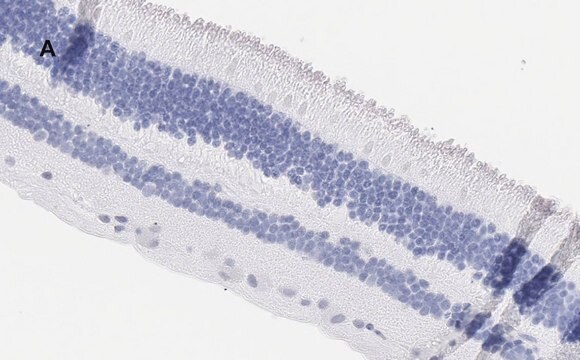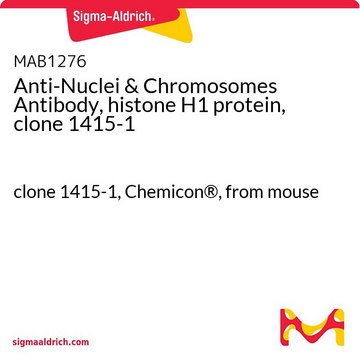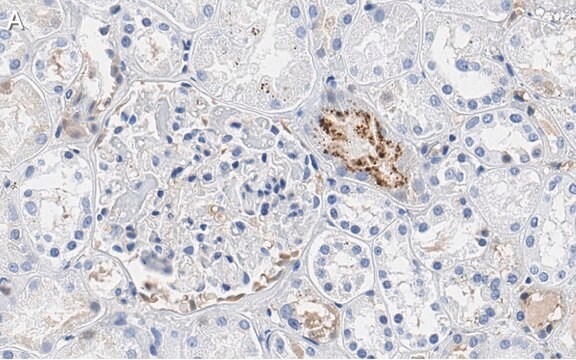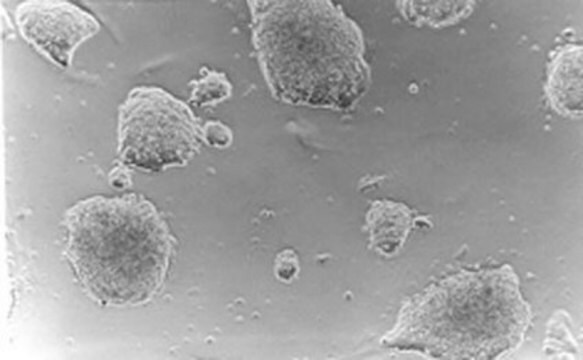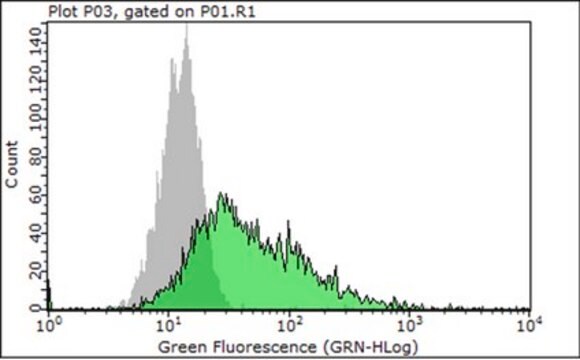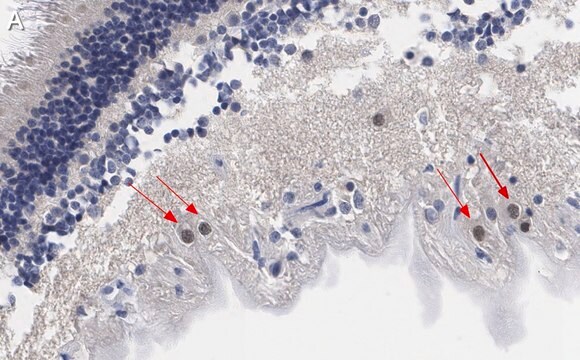MAB1059
Anti-Pigment Epithelium Derived Factor Antibody, clone 10F12.2
clone 10F12.2, Chemicon®, from mouse
Synonyme(s) :
pigment epithelium-derived factor, proliferation-inducing protein 35, serine (or cysteine) proteinase inhibitor, clade F (alpha-2
antiplasmin, pigment epithelium derived factor), member 1, serpin peptidase inhibitor, clade F (alpha-2 antiplasmin
About This Item
Produits recommandés
Source biologique
mouse
Niveau de qualité
Forme d'anticorps
purified immunoglobulin
Type de produit anticorps
primary antibodies
Clone
10F12.2, monoclonal
Espèces réactives
human
Réactivité de l'espèce (prédite par homologie)
rat
Fabricant/nom de marque
Chemicon®
Technique(s)
ELISA: suitable
immunocytochemistry: suitable
immunohistochemistry: suitable
western blot: suitable
Isotype
IgG2a
Numéro d'accès NCBI
Numéro d'accès UniProt
Conditions d'expédition
wet ice
Modification post-traductionnelle de la cible
unmodified
Informations sur le gène
human ... SERPINF1(5176)
Description générale
Spécificité
Immunogène
acids 196-347 of human PEDF tagged with GST on the N-terminal was expressed in E. Coli. GST-PEDF is about 46 kDa on SDS-PAGE.
Application
Neuroscience
Neurochemistry & Neurotrophins
Recognizes a protein with a molecular weight of ~46 kDa when tested against immunogen. Western blot positive control is available (Catalog number AG672)
ELISA:
A previous lot of this antibody was used on ELISA.
Immunocytochemistry:
A previous lot of this antibody was used on Immunocytochemistry.
Immunohistochemistry:
A previous lot of this antibody was used on frozen sections.
Optimal working dilutions must be determined by end user.
Qualité
Western Blot Analysis:
1:1000 dilution of this lot detected pigment epithelium on 10 μg of human placenta lysate.
Description de la cible
Forme physique
Stockage et stabilité
Remarque sur l'analyse
Eye tissue.
Autres remarques
Informations légales
Clause de non-responsabilité
Vous ne trouvez pas le bon produit ?
Essayez notre Outil de sélection de produits.
En option
Code de la classe de stockage
10 - Combustible liquids
Classe de danger pour l'eau (WGK)
WGK 2
Point d'éclair (°F)
Not applicable
Point d'éclair (°C)
Not applicable
Certificats d'analyse (COA)
Recherchez un Certificats d'analyse (COA) en saisissant le numéro de lot du produit. Les numéros de lot figurent sur l'étiquette du produit après les mots "Lot" ou "Batch".
Déjà en possession de ce produit ?
Retrouvez la documentation relative aux produits que vous avez récemment achetés dans la Bibliothèque de documents.
Notre équipe de scientifiques dispose d'une expérience dans tous les secteurs de la recherche, notamment en sciences de la vie, science des matériaux, synthèse chimique, chromatographie, analyse et dans de nombreux autres domaines..
Contacter notre Service technique
